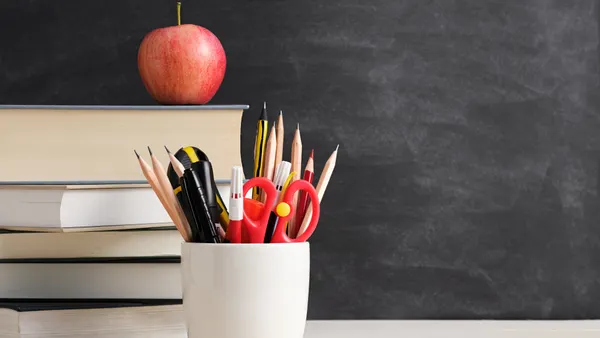Dive Brief:
-
Engaging students through inquiry and research using project-based learning strategies can occur in-person and online but doing so online will take deliberate steps to foster class collaborations and organize projects remotely, said PBL experts Rich Dixon and Lisa Mireles in a virtual session during the annual ISTE conference Monday.
-
PBL’s move to online also doesn’t mean the scope and depth of projects should be scaled back. In fact, Dixon and Mireles said the elements of Gold Standard PBL, such as authenticity and student voice and choice, can be strengthened in remote settings through ed tech tools.
-
As schools ramp up efforts to accelerate learning in impactful ways in response to the pandemic, PBL offers an instructional methodology that uses students’ inquiry to solve real-world problems, which can expand students’ personal connections to their learning, Dixon and Mireles said.
Dive Insight:
PBL, done in-person or face-to-face, also provides educators with strategies for culturally responsive teaching as educators leverage students’ cultural identities and interests to plan instruction while maintaining high expectations, said Dixon, who is director of online learning for the Buck Institute for Education's PBLWorks, and Mireles, the organization's director of design and research.
"Specifically, we believe that PBL harnesses the power of collectivism, which is a pillar of the cultures of many of our Black and brown students,” Dixon said.
For remote or hybrid settings, school system leaders and teachers should understand how instructional approaches for PBL may need to be altered, they said. They offered advice for four especially challenging PBL elements for online learning:
-
Establish collaboration guidelines. Teachers should be deliberate in creating a PBL culture of collaboration and trust by setting norms or guidelines for respectful and productive interactions while working online. A virtual gallery walk can help teachers reinforce those guidelines when needed.
-
Develop a system for project organization. Helping students organize tasks online can also be challenging, Mireles said. Using digital project walls where key information about a project is displayed helps students and the teacher visualize project milestones, such as deadlines and samples of students’ work.
-
Manage individual student progress. There are several virtual strategies teachers can use to support individual student learning needs, Dixon said. Using breakout rooms, instruction can be divided into smaller lessons that include review of information presented earlier.
Students can use chat features to reflect on their prior knowledge. Teachers can then help students track what they know and what they need to know to make progress on the project. -
Maintain student engagement. Teachers modeling engagement in learning and creating can help motivate student participation. “A lot of people misunderstand this teaching practice but we're all learners here,” Mireles said.
Teachers should also know when students need more skill-building, redirection, encouragement and celebration. In a remote classroom, teachers can use tools such as digital task menus to help students participate in whole group instruction, one-to-one student-teacher feedback sessions and independent work so each activity is productive and centered on student learning, Mireles said.







 Dive Awards
Dive Awards



